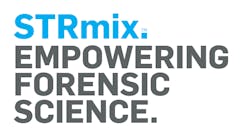STRmix Releases Enhanced Kinship Capability in DBLR Software
WASHINGTON, DC (12/16/21) – The team behind STRmix™ – sophisticated forensic software used to resolve mixed DNA profiles previously regarded as too complex or degraded to interpret – is releasing significant enhancements to its DBLR™ investigative application.
Used in conjunction with STRmix™ to calculate millions of likelihood ratios (LRs) in seconds, the new version of DBLR™ (which stands for database likelihood ratios) will feature:
- Improved modelling through the introduction of linkage, mutation, and FST to the Kinship module; and
- The ability to assign LRs within the Kinship module for single source profiles containing both STR and SNP loci generated using Next Generation Sequencing (NGS) technology.
Likelihood ratios are used to assess the strength of DNA evidence and how likely it is that DNA found at a crime scene belongs to specific individuals.
“The enhancements to the Kinship module allow users to apply advanced models in a simple and streamlined solution,” says Dr. Maarten Kruijver, the developer of DBLR™. “In addition, the new ability to assign LRs from NGS reference profiles is an important step forward, as the community continues to prepare for the emergence of NGS technology in forensic labs.”
Other improvements in the updated release of DBLR™ include the introduction of a Direct Matching module for database to database comparisons and the inclusion of cluster graphs in the mixture-to-mixture match reporting, enabling better visualization of the results.
Forensic labs using DBLR™ in conjunction with STRmix™ are able to visualize the value of DNA mixture evidence, undertake mixture-to-mixture comparisons, and achieve superfast database searches. DBLR™ also provides increased accessibility since it can run on a user’s PC without the need for high-performance computing.
“Since having gone live in casework with DBLR™, we have found DBLR™ very useful for multiple applications. We use DBLR™ for performing unidentified human remains identification, which saves our analysts hours of manual kinship calculations,” explains Dr. Duncan Taylor, Chief Scientist - Forensic Statistics at Forensic Science SA (and co-developer of STRmix™).
Dr. Taylor adds, “We use DBLR™ to interrogate the discrimination power of DNA profiles to assist in making decisions on which analyses to perform. We have also found it to be extremely effective in generating intelligence for cold cases when looking at profiles that span multiple items and may contain related or common DNA donors.”
Dr. Taylor developed STRmix™ along with Dr. John Buckleton, DSc, FRSNZ, and Dr. Jo-Anne Bright, both of the New Zealand Institute of Environmental Science and Research (ESR).
STRmix™, DBLR™, and a third software package developed by the STRmix™ team, FaSTR™ DNA, complete the full workflow from analysis to interpretation and database matching. FaSTR™ DNA rapidly analyzes raw DNA data generated by genetic analyzers and standard profiling kits and assigns a number of contributors (NoC) estimate.
The effectiveness of these solutions, coupled with the highly successful track record STRmix™ has established in producing usable, interpretable, and legally admissible DNA evidence in more than 300,000 criminal cases, has led to their widespread adoption in forensic labs worldwide.
Currently, 69 federal, state, and local agencies in the U.S. regularly use STRmix™ for DNA analyses. Internationally, nine state and territory forensic laboratories in Australia and New Zealand, and 14 labs in other countries including the U.K., Ireland, Canada, Finland, Switzerland, and Denmark now use STRmix™.
For more information about STRmix products, visit www.strmix.com.



